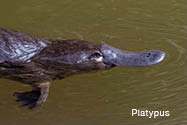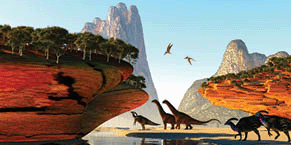Return to 3rd Quarter 2022 articles.

We hear from both skeptics and biblical fundamentalists about taking the Bible literally. However, even those who claim to interpret the Bible literally often do not, resulting in some ridiculous errors. Furthermore, those misinterpretations cause faith challenges for better educated young people because they realize that some things people ascribe to the Bible are not logically or scientifically possible.
To interpret the Bible literally, you must take the whole Bible and not cherry-pick individual passages to support what you already believe. It also means looking at the original language and asking how those to whom it was written would have understood it. For example, when the first chapter of Genesis lists the animals God created, the Hebrew words refer to creatures the readers knew. Behemah (cattle) in verses 24 and 25 (Genesis 1:24–25) did not include dinosaurs, platypuses, giraffes, or elephants. People would have understood it to refer to the cattle the readers knew. Remes (creeping things) in the same verses would not have meant snakes and Komodo dragons but rather the smaller examples of livestock like goats and sheep the readers knew. In Genesis 9:1–3, remes is included as an animal God said would be food for the Israelites. We know that the Jews had food restrictions that would not have included snakes, worms, and dragons, so the meaning of remes is clear.
Where Do We Find Dinosaurs in the Bible?
Someone asks, “Where do we find dinosaurs mentioned in the Bible?” The answer to that question is “nowhere.” Those who attempt to include dinosaurs on Noah's ark are not taking the Bible literally. When they do that, they provide fuel for those who say the Bible is a book of myths.

Why would the Bible mention dinosaurs? Consider how you would explain bacteria to a man with no microscope or how could a person living in the jungle make sense of an octopus? When an explorer brought a stuffed platypus back to England for the first time, people thought it was a fake. Millions of different plants and animals have lived on Earth, many of which still exist today. The purpose of the Genesis account is to say that God created everything, not to identify the millions of species that have lived on Earth. Genesis mentions only the animals the Israelites could identify and name.

So from today's perspective, when did those animals exist? Some fundamentalists have suggested that we do not find dinosaurs mentioned in the Bible because they did not exist. They say that God miraculously created dinosaur fossils to give the appearance that the animals lived when they did not. That explanation makes God a liar trying to fool us into a false conclusion.
Others suggest that dinosaurs were there but simply were not mentioned in the Bible. There is no evidence that animals like T. rex lived during Adam and Eve's time. The atmosphere and temperatures necessary for such an animal to survive would be detrimental to humans.
Why Did Dinosaurs Exist?
Since we do not find dinosaurs mentioned in the Bible, what was God's reason for creating these huge animals? God knew that humans would need an environment optimized for their survival. In Alaska today, the survival of various life forms depends on salmon bringing nutrients into an environment lacking those essentials. Like the salmon, the dinosaurs were the vehicles that provided resources needed for humans to exist and flourish later. The plant-eating dinosaurs consumed massive amounts of vegetation and excreted processed plant materials and seeds. They spread the vegetation and produced topsoil and critical elements necessary for human life. No animal living today could accomplish that task.

When Genesis 1:1 tells us that God created the heavens and the earth, the result would be a functioning universe and a dynamic planet where humans could eventually live. Earth was not a blob of molten rock or hydrocarbons but a functional planet, and dinosaurs were one of God's tools to prepare it for humans. The big animals and plants helped create topsoil, coal, and a variety of trace elements human life would need. The oceans nurtured diatoms that produced the massive amounts of hydrocarbons humans would need for oil and gas. We do not find bacteria, diatoms, or dinosaurs mentioned in the Bible because they are included in Genesis 1:1.

God could have zapped the hydrocarbons into existence, but if he had done it that way, humans could never have located them. God not only created the resources we would need, but he did it in a way that we could find them. He gave us the intelligence to study his methods to find the resources and obtain them for our use.
The wisdom of God in designing Earth to sustain human life is incredible. Every day, science finds clues about how the planet was designed and how things we might consider insignificant are critical to our existence.
Picture credits:
© Corey Ford. Image from big stock.com
© Veira. Image from big stock.com
© Herschel Hoffmeyer. Image from big stock.com
© Corey Ford. Image from big stock.com
© Goodluz. Image from big stock.com
Scripture links/references are from BibleGateway.com. Unhighlighted scriptures can be looked up at their website.
